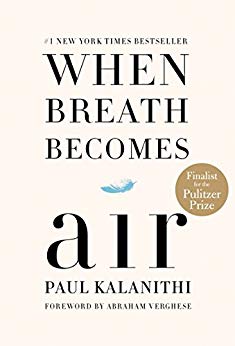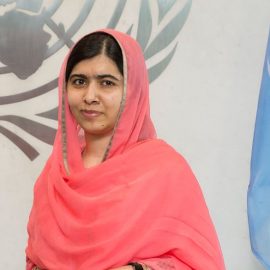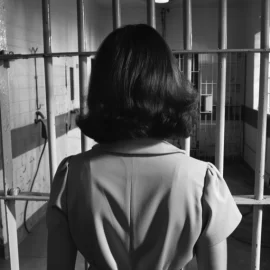

This article is an excerpt from the Shortform summary of "When Breath Becomes Air" by Dr. Paul Kalanithi. Shortform has the world's best summaries of books you should be reading.
Like this article? Sign up for a free trial here .
When Breath Becomes Air recounts the life of Dr. Paul Kalanithi, a neurosurgeon, after he is diagnosed with lung cancer during his last year of residency. With elegant and beautiful prose befitting a novelist more than a doctor, Paul guides readers through his life before and after his diagnosis, a life marked by a search for understanding life, death, and meaning.
Shortform note: This article and our summary of When Breath Becomes Air is written in a way that allows you to share in the experience provided by the memoir.
Simply reading about the content of the story seems insufficient in expressing the emotional journey. To really provide you with the sensation this book creates, we wrote in the first person, using a voice similar to his. We highly recommend reading the original book for the full experience. Reading the words coming directly from him is a powerful experience we can’t replace.
Paul Kalanithi’s Early Life
Shortform intro: As you’ll see from this section, Paul Kalanithi didn’t always want to be a doctor. Read on to find out why that changed, and how Paul Kalanithi’s early passions led him in his journey to become a neurosurgeon.
Growing up, I didn’t want to be a doctor. I didn’t know what I wanted to be.
Plus, so many people in my family were doctors, including my uncle and father. My father was Dr. Kalanithi, and from what I knew about it, medicine seemed to equate to long hours and time away from your family.
My father had moved my two brothers, my mother, and me from Bronxville, New York, a picturesque community north of the city, to Kingman, Arizona several years earlier. Kingman wasn’t on anyone’s radar except for as a place to pass through. The desert town was walled in by two mountain ranges. My father had loved the weather, the more reasonable prices, and the opportunity to build his own medical practice.
How he’d convinced my mother to move there was a mystery. A Hindu from southern India, she was deathly afraid of snakes, which were prevalent in the Arizona desert, among other creatures. My friends and I ran freely, roaming t expansive land in search of treasures. Compared to our previous buttoned-up, quaint, Norman Rockwell community, I was enchanted with the unruly terrain.
My mother, on the other hand, became ingrained in our educational upbringing. She feared the lack of opportunities a school district like Kingman could offer her sons. She was well-educated, having trained to be a physiologist before marrying my father. But her knowledge of books was scarce, and she was determined to change that in our lives.
Making sure we were well-read wasn’t the end of my mother’s pursuits. She became part of the school administration, organized the teaching staff, lobbied for advanced classes to be provided. She was a one-woman construction crew, and she reconstructed the Kingman school district into a place where the students started to feel like they had a chance. To ensure our chance at success, she drove us to Las Vegas a hundred miles away to take our placement tests.
College and the Decision to Become a Doctor
Shortform intro: Paul Kalanithi’s path to medical school took a less traditional track than ones we’re familiar with. He even studied literature as an undergraduate.
The summer before I left for Stanford, my girlfriend at the time gave me a book, Satan: His Psychotherapy and Cure by the Unfortunate Dr. Kassler, J.S.P.S. by Jeremy Levin. It wasn’t like the rest of the books I’d read. It was about the brain and how the mind was strictly a mechanical function of it. This idea changed me. My love of literature was partly due to the way it cut to the core of human meaning. If the brain was responsible for operating this sense of meaning, I wanted to learn more about it. To my upcoming college courses in literature, I added biology and neuroscience.
My time at Stanford wasn’t geared toward figuring out a career path. What motivated me during those first years of college was a desire to understand the aspects of life that made it meaningful. I was working toward degrees in English and Biology, but I still felt literature was superior in illuminating the mind.
Through literature, including the likes of T.S. Eliot, Elio, Nabokov, and Conrad, I learned about human suffering, isolation, despondency, and the fallibility of language and ensuing consequences. I became privy to the experiences of others and to the need to reflect on my reaction to them. Literature created a landscape for moral examination and for the expression of true life.
It was during senior year when my neuroscience class took a trip to a facility that housed people with traumatic brain injuries. As soon as we entered, a visceral wailing met us. I looked around until I saw the source of the sound—a young woman curled up on the floor in the middle of an agonizing episode. I quickly recognized that we were the only non-residents in the place. When I inquired why, I was horrified to find out that many of the families of the residents had stopped visiting as frequently or at all.
I was livid and stormed out. But later, after thinking about it, I realized that experience had changed something in me. The brain houses our ability to relate and connect and make meaning of life. When the brain fails, we lose those things. I wondered: when those things are lost, is life worth living?
I couldn’t shake the feeling, as I got closer to graduation, that there was still more I wanted to learn. I decided to enroll in graduate school to continue my education on how literature relates to meaning. I was going after a master’s degree in English literature at Stanford.
I also discovered that literature, in the way it sharply deviates from science, was not to be the focus of my continued studies. Despite the positive response to my thesis, I’d included as much rumination on neuroscience and psychiatry as literature. I knew it was beyond the scope of the standard English department ideology. And so was I.
While my friends headed east to become artists, I was still pondering the intersectionality of biology with literature, morality, and philosophy. I wasn’t sure what the future held for me. Then, one day, I had a sort of divine epiphany—only by being a doctor could I come to learn the answers to my questions. As Whitman had stated, the physician is the only one who can truly discover the physiological-spiritual man. Despite my misgivings as a young man, I, Paul Kalanithi, was going to become a doctor.
Illness and Diagnosis
Shortform note: Paul Kalanithi was diagnosed in his thirties, during the last year of his residency. After years spent working and studying, he feared that his time as a doctor would be cut short. Discover how Paul Kalanithi dealt with his diagnosis.
I’d spent ten years traveling a straight path from medical student to neurosurgical resident, and with graduation only a year and a half away, my rise to the more comfortable life of neurosurgeon and professor was almost realized. When that happened, my schedule would settle down. I could finally have a more stable life and a rested body and be the husband Lucy and I both wanted me to be.
As a neurosurgical resident about to graduate and move into the role of doctor, I knew what the signs of cancer were. When I looked at the CT scan, at the lungs, the spinal cord, and the liver, the diagnosis became clear. I’d looked at similar scans over the years of my training, but those scans always belonged to others. They weren’t like this scan, which belonged to me. I couldn’t believe that they were mine, a doctor, Paul Kalanithi.
My wife, Lucy, a doctor of internal medicine, and I had noticed the signs during the past 12 months, but neither of us vocalized our suspicions. I didn’t want to admit what the amount of weight I’d been losing or the immense back pain I had started experiencing added up to
But after another few weeks, the pain was not only in my back. I started experiencing significant chest pain. I was coughing relentlessly, and I dropped thirty pounds. I knew the odds were not in my favor.
I turned to the Internet, researching cancer in people aged mid- to late-thirties. Lucy discovered the search results and was livid. Her anger stemmed from my secrecy, from the fact that she had been managing her fears while I’d been managing mine. She was angry about what felt like a betrayal, not of my confidence, but of the drastic change in the picture of our life I was meant to create for us.
Death, which I had turned from a foe into a sometimes necessary associate, no longer waited at my side with deference. Death now sat across from me, and I didn’t know how to address it anymore. I didn’t know how to find the words with which to negotiate. It was as if I was being introduced to death for the first time, and the code of conduct was still unknown.
Lucy and I met with the doctor who would see me through my illness, Dr. Emma Hayward. She discussed the diagnosis with us, but she wouldn’t discuss a prognosis. She focused on how we should approach treatment so I could return to work. I thought she was out of her mind. Surely, returning to work was not an option. I knew it was an option I couldn’t even consider without knowing where I stood within the threshold I’d met so many patients at.
Emma informed me of two possible avenues for treatment. There was the standard chemotherapy, attacking the cancer from the outside in. But there were other therapies, new discoveries that attacked the cancer from the inside out. I hadn’t realized how many advancements had been made in the treatment of certain types of cancer, and there was evidence that some of these newer therapies led to unthinkable survival rates for some.
Paul Kalanithi’s Book: When Breath Becomes Air
Shortform note: Following his instincts, Paul Kalanithi began writing nonstop during treatment. Though he wasn’t positive how much time he had left, he was determined to make sure he stayed true to himself.
Without my medical training to guide me, I returned to my first love for answers: literature. Wanting to be physically involved in the chasm between life and death had pulled me from my pursuit of language to explain it. But now, in wanting to understand what death meant in my life and how it defined who I was meant to be, I returned to language. I sought that same vocabulary I had sought as a younger man.
Literature became my lifeline. My actions had become framed within the confines of how they related to death. But language had a power to supercede that meaning. The relentless uncertainty about what I should be doing ceased one day when the words of Samuel Beckett overshadowed my fears. I started the day suffering, the pain so bad I couldn’t fathom any possibility for action beyond getting up. I thought, “I can’t go on.” Just as quickly, though, Beckett’s words finished the thought, “I’ll go on.” I faced the day, one step at a time, repeating, “I can’t go on. I’ll go on.”
Everything became clear in that moment. Although I was dying, I wasn’t dead yet. I was still living, and the only person I knew how to be among the living was me, Dr. Paul Kalanithi, the person I’d always been. And who I was was a surgeon. I would find a way to be that person again, whatever that looked like now, until death said for certain I couldn’t anymore.
When Breath Becomes Air Published Posthumously
Paul Kalanithi’s daughter was born, and his treatment stopped working a few months later. Paul’s wife, Lucy, wrote the epilogue of When Breath Becomes Air, and explains why he worked tirelessly on his manuscript even in his final days.
Although Paul Kalanithi’s book was not complete when he died, Lucy sees the correlation with his unfinished life. The book, like Paul, did not get the time it deserved.
He’d started the manuscript over the last year, writing with fervor every chance he had. He wrote while he was still finishing his residency. He wrote at night in bed. He wrote while waiting for his doctor appointments. He wrote and communicated with his editor while receiving chemotherapy.
Like the final year of his life, Paul Kalanithi’s book carries a sense of urgency. There was a desire to communicate everything he’d learned as a doctor and patient about life, death, and meaning under a ticking clock counting down the minutes until he could say no more. Dr. Kalanithi couldn’t help people as a doctor anymore, but he still wanted to guide them through that threshold he’d helped so many walk through.
As he’d done for most of his life, Paul Kalanithi’s book examines mortality and what it means to live with meaning. He wanted to face his mortality with grace, and he wanted to help others do the same.

———End of Preview———
Like what you just read? Read the rest of the world's best summary of Dr. Paul Kalanithi's "When Breath Becomes Air" at Shortform .
Here's what you'll find in our full When Breath Becomes Air summary :
- How Paul Kalanithi discovered he had cancer
- How Paul coped with his cancer until his very end
- How Paul's wife dealt with his death and found the strength to continue






